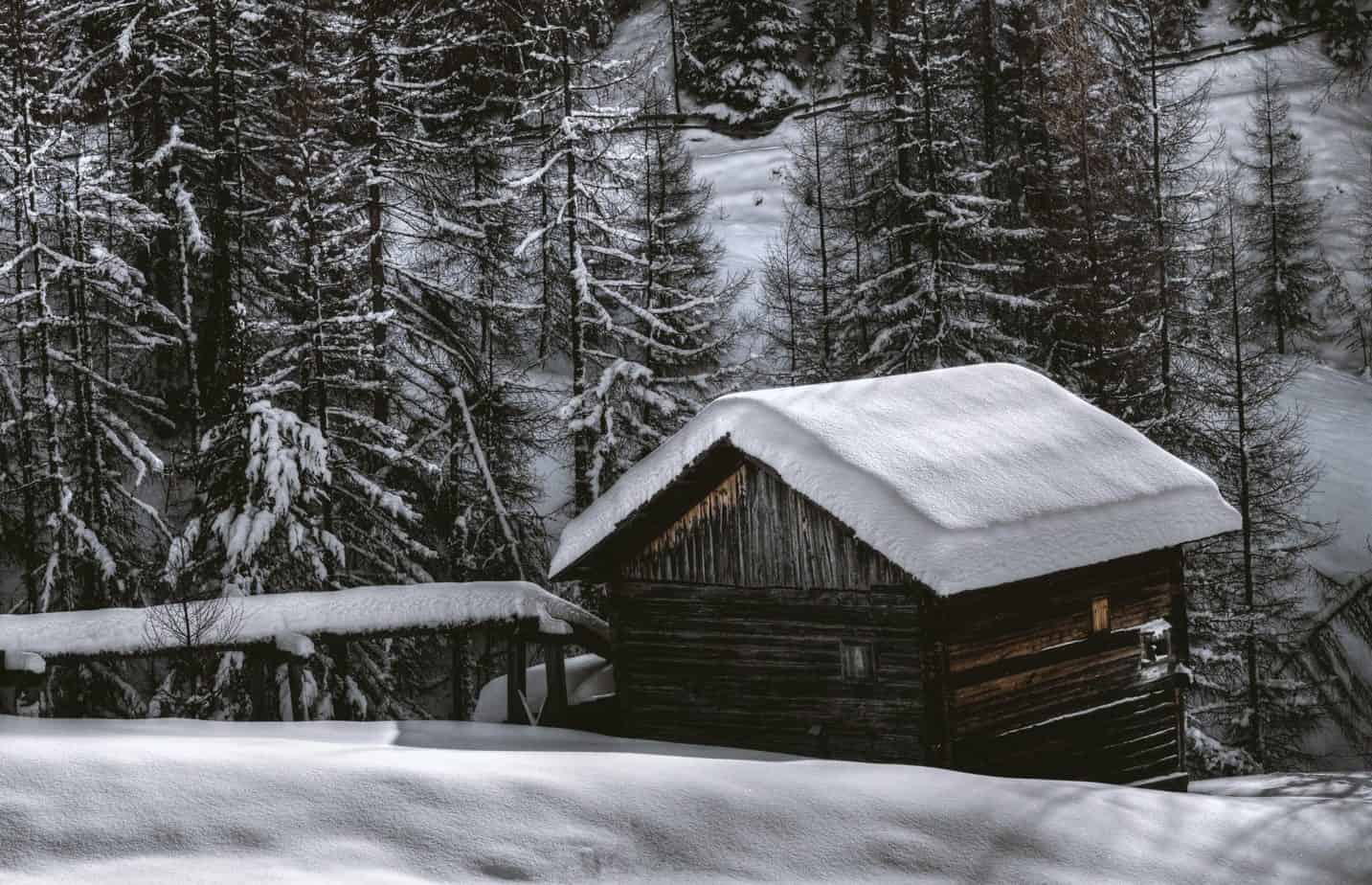Insulating a shed is a necessary step if you will spend a good portion of your time in there.
It isn’t fun working in a place where it feels like toast in summer and freezing cold during the winter. If you haven’t done it already, insulating your shed is a recommended step. Do you have a limited budget?
There are cheap options that you can use temporarily. Here are eight best ways to insulate your shed cheaply.
You can insulate your shed cheaply by strategically using cheap materials for a temporary option. There are budget-friendly insulation materials such as bubble wrap and fiberglass batts. Both are reliable and affordable in insulating your shed. If you’re really short of money, you can use materials like hay, cardboard, or any recycled materials.
There are tons of benefits in insulating your shed and making it weather-proof.
A well-insulated shed will have a longer life-span and a more comfortable workspace during cold winters or hot summers. Not to mention that insulating your shed is quite easy and can be done in a day. If you think about the benefits, there is no reason not to insulate your shed.
That’s unless you don’t have the funds to spare to buy the insulation materials. Fortunately, there are cheap alternatives that can be used to temporarily insulate your shed. In most cases, you can even do the insulation, if it’s worth it, without spending a lot of money.
Take note: year-round insulation with high-quality materials is recommended if you’re going to use the shed regularly. Some of the tips below are only for temporary usage.

Eight Effective Insulation Hacks For Your Garden Shed
1. Use Hay For Insulation
When insulation sheets aren’t affordable, most people who need insulation use hay or straw bales in their structures. Barns would often have straws on the roof to protect animals during winters and summers. Hay bales work by trapping the warm air inside the structure and keeping the heat or the cold temperature from entering.
Hay bale insulation would need more maintenance than usual since it’s an organic material. But if you have a farm, you can get the materials for free. You also need to insulate the walls, roof, and floor to get the full effect. This will make a huge difference.
Take note: hay bale can catch fire, so only use this insulation for outbuildings. Avoid storing ignitable materials in the structure.
2. Insert Bubble Wrap Inside The Shed Walls
Bubble wraps are used in the packaging industry for good reasons: it keeps the package safe and maintains good temperature. With the same principle as hay bales, bubble wraps keep the temperature inside via air pockets. And since it is slimmer and easier to install than hay, it’s a better solution overall.
You can re-use bubble wraps as long as its in a good condition. Since it is reusable, it is one of the basic, cheap, and economical insulation materials. Take note: use wraps with bigger bubbles to increase its performance efficacy. Bubble wraps are good for insulating greenhouses to help plants grow during the winter.
3. Used Cardboard Boxes
There is a good reason why you should not throw away retailer boxes from Amazon/Best Buy etc.
Cardboard boxes can also be used as a cheap, effective insulator. In fact, there is a startup called UltraCell Insulation which turns cardboard boxes into insulation material. Corrugated cardboard was shredded into pieces and is turned into cellulose materials for insulation.
To do this at home, use corrugated cardboard sheets to fill the walls of the shed. Use multiple sheets together to increase effectiveness. If possible, use sheets with little to no damage at all. Keep them all sandwiched together for greater effect.
4. Spray Foam Insulation
Spray Foam insulation works by sealing leaks and gaps in the walls.
Because the gaps are filled, there would be fewer air leaks from the structure, keeping the inside space warm and stable. These sprays use liquid polyurethane to quickly and cheaply close the gaps where air can escape. It will expand to fill the gaps and will cling to any surfaces.
When dried completely, the spray foam insulation would become hardened and solidified space that can be painted on. For insulation purposes, use the closed-cell foam spray. Open-cell foam spray is cheaper but is only effective in blocking noises from one room to another.
5. Fiberglass Batts
Fiberglass Batts is one of the cheapest, yet effective insulation materials recommended by the Department of Energy. Considered as a blanket-type, it can be used on unfinished walls, floors, and ceilings. Most of the time, the blankets or sheets are cut into manageable pieces and fitted between the studs, joists, and beams of the house or shed.
Blanket batts and rolls are usually made with natural fibers, wool, plastic fibers, and fiberglass. The advantages of fiberglass batts its availability in different shapes and thicknesses. You can add more funds to have more efficacy, or only get the basic size and thickness to save money. Expect to spend at least $20 for a 15” x 32’ roll.
6. Styrofoam
Another type of cheap insulator is styrofoam.
Just like bubble wraps, styrofoams are used in packaging because it is light, rigid, and can keep the internal temperature of the space steady. Since the gaps in the styrofoam retain air, these air molecules prevent warm air from escaping. It also protects the inside space against the temperature changes outside.
To install styrofoam insulation, you need to cut the styrofoam sheets into manageable pieces. Use adhesive to keep the foam on the wall. Note: use an adhesive that is made for expanded polystyrene, since any other adhesive can melt the styrofoam.
This can be used together with spray foam to achieve a better insulation effect.
7. Radiant Barrier
Radiant barriers are often used in sheds and attics located in warmer regions. These insulation rolls are often used to reflect the heat and reduce the cooling bill. To reflect the additional heat from the sun, these aluminum foil sheets transfer the heat to cooling air ducts. You need to install this facing an air space to be effective.
Using Radiant Barriers in a cool climate might not give the best results. Instead, other cheap insulation options mentioned above (like bubble wraps and fiberglass batts) should do the work in the most cost-effective way.
Take note: before installing this insulation type, make sure you read the manufacturer’s guide. This type of insulation will not work well if not installed properly.
8. Recycle Things You Don’t Need
If push comes to shove, and you’re really in financial distress during the winter, the best way to insulate your home is to use everything you can. According to The Guardian, the best candidates for this insulation method are textile wastes such as unusable clothes, tattered curtains, rags, etc. If it has clothing material on it, you can use it.
Of course, this method will require more work, but it is still very effective. In fact, Richard Fitton from Salford University found out that it can reduce heating consumption by two-thirds. In addition, don’t forget to add carpets on the floor for additional insulation.
Take note: recycled clothing should be properly treated first before installation to avoid fire hazards and pest infestations.
Factors To Consider When Insulating Your Shed
The All-Around Climate
There is a thing called the insulation R-Value, which is the ability of a material to resist heat flow. Higher R-Value means it can work better in resisting heat. Before deciding on the insulation material to use, know your area’s R-Value first. This is where you need to base if your material of choice is enough for insulating your shed.
You can find your area’s R-Value here.
Thickness Of Insulation Material
Needless to say, the thicker the material used, the better the insulation effect would be.
Heat transfer is needed to be minimized to get better insulation. Since gas is better insulators, insulation materials are often “spongy” or can retain air molecules. If these materials are thicker, there would be more air molecules which can help in thermal insulation. Most insulation materials come in 1 inch to 2.5 inches sizes.
Parts Of The Shed
Insulating the shed walls and roof is different from insulating the shed floor.
When it comes to flooring, the cheapest insulation is to put an old roll of carpet over a water-resistant membrane. However, you really need to make the effort of budgeting and getting the best materials possible when it comes to the roofing and walls. The reason being, this is where most heat transfers will happen. In fact, most of the heat lost happens in the walls.
In addition to the former paragraph, you might want to insulate the gaps of your doors and windows. Seal the draughts around the windows and door frames to reduce warm air from exiting the room.
You can use spray foam for this task, but dealing with other things like rubber strips would do the job as well.
